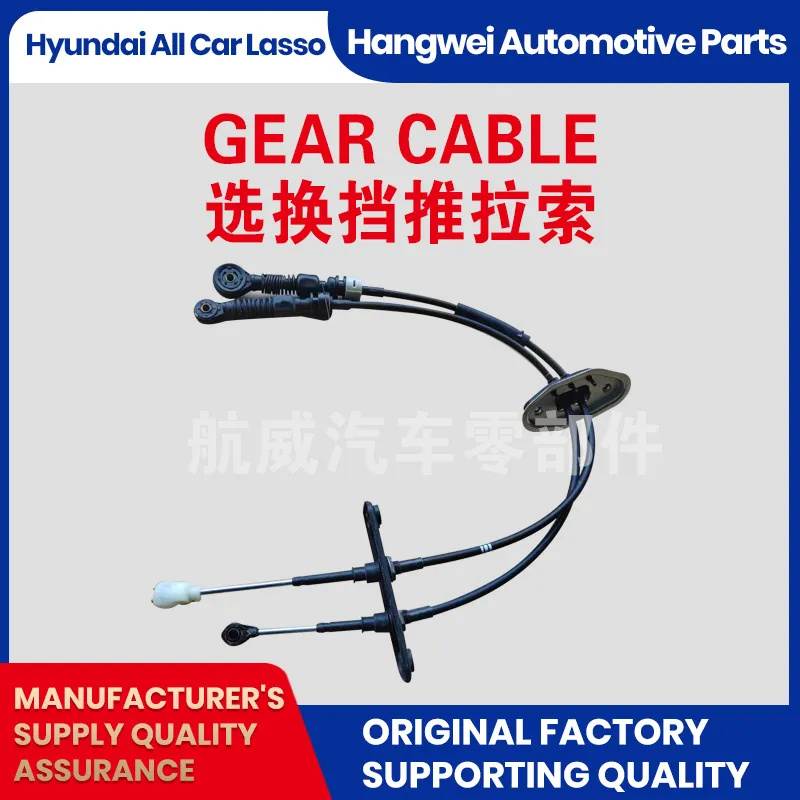Understanding the Function and Importance of Derailleur Gear Cables in Bicycles
Understanding Derailleur Gear Cables A Key Component of Modern Bicycles
The derailleur gear cable is a crucial component in the complex engineering that allows modern bicycles to shift gears smoothly and efficiently. As cycling technology has advanced, the importance of understanding and maintaining this seemingly simple yet essential part has grown significantly among amateur and professional cyclists alike. In this article, we will explore the function, types, maintenance, and troubleshooting of derailleur gear cables.
Function of Derailleur Gear Cables
At its core, a derailleur gear cable’s primary purpose is to transmit the rider's intention to change gears to the derailleur itself, which then moves the chain between different gears on the bike's cassette and chainrings. When a rider shifts the gear lever, the cable is either tightened or released, causing the derailleur to pivot and shift the chain accordingly. This seamless interaction allows for smooth transitions in pedaling effort, optimizing the bike's performance across varied terrains.
The derailleur gear cable functions in conjunction with the derailleur, which consists of a series of pulleys and a spring mechanism. The efficiency of this system is paramount for achieving the desired speed and cadence, especially during competitive riding or challenging climbs.
Types of Derailleur Gear Cables
There are several types of derailleur gear cables available, with variations designed for specific bike types or riding styles. The most common types include
1. Bowden Cables These are standard cables encased in a flexible sheath. They are essential for most bike setups and are known for their reliability and ease of replacement.
2. Stainless Steel Cables These cables are designed to resist corrosion and offer enhanced durability, making them ideal for riders who frequently ride in wet or harsh conditions.
3. Coated Cables Coated cables feature a layer of plastic that reduces friction, improving shift quality and reducing the effort needed to operate the shifters.
4. High-Performance Cables Some manufacturers offer specialized cables designed to provide quicker and more responsive shifts, which are preferred by competitive cyclists looking to shave off precious seconds during races.
Maintenance of Derailleur Gear Cables
Proper maintenance of derailleur gear cables is crucial for ensuring that your bike shifts smoothly and effectively. Here are some tips for keeping your cables in optimal condition
derailleur gear cable

1. Regular Inspection Check your cables for any signs of frays, rust, or wear. If you notice any imperfections, it is best to replace the cable before it breaks.
2. Lubrication Keeping the cables lubricated will reduce friction and improve performance. Use a light lubricant designed for bicycle cables to ensure optimal functionality.
3. Cleaning Periodically clean your cables and housing to remove dirt and grime that can hinder performance. A clean system will shift more smoothly and last longer.
4. Proper Routing Ensure that your cables are routed correctly, avoiding sharp bends or kinks that can increase wear and tear.
5. Adjustment Regularly check the tension of your cables and make necessary adjustments. Incorrect tension can lead to poor shifting performance or difficulty in changing gears.
Troubleshooting Common Issues
Even with proper maintenance, issues can arise with derailleur gear cables. Some common problems include
1. Poor Shifting If your bike is not shifting correctly, first check the cable tension. If the tension is too loose or too tight, adjust accordingly. Also, consider whether the derailleur’s limit screws need adjustment.
2. Sticking or Binding If the cable is sticking, inspect it for damage or debris in the housing. Cleaning or replacing the cable may be necessary to fix this issue.
3. Cable Stretch Over time, cables can stretch, which can affect shifting precision. Regularly check for cable stretch and replace cables as needed to maintain performance.
Conclusion
Derailleur gear cables may seem simple, but they play a vital role in the performance and enjoyment of cycling. Understanding their function, types, and maintenance can provide cyclists with a smoother and more efficient riding experience. With the right care and attention, derailleur gear cables will contribute to the longevity and performance of your bike, making them an asset worth investing time and effort into. Whether you're a casual rider or a serious cyclist, keeping your derailleur gear cables in top condition is essential for maximizing your bicycle’s potential.
-
Workings of Clutch Pipe and Hose SystemsNewsJun.04,2025
-
The Inner Workings of Hand Brake Cable SystemsNewsJun.04,2025
-
The Secrets of Throttle and Accelerator CablesNewsJun.04,2025
-
The Hidden Lifeline of Your Transmission Gear Shift CablesNewsJun.04,2025
-
Demystifying Gear Cables and Shift LinkagesNewsJun.04,2025
-
Decoding Clutch Line Systems A Comprehensive GuideNewsJun.04,2025
